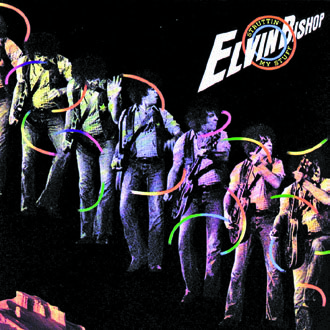What to Remember When Performing Elvin Bishop's "Fooled Around and Fell in Love"

Throughout the Intro to this classic rock song (bars 1–4), and again during its chorus (in bars 14 and 16), guitarist Johnny “V” Vernazza employs a cool technique, in the Gtr. 3 and Gtr. 4 parts, that’s sometimes referred to as “harp harmonics” to perform what are more formally known as artificial harmonics (indicated in tab by the abbreviation A.H.) and create chime-y, flute-like melodies, which are based on arpeggiated chord shapes and played in two-part harmony by the two guitars on different strings, with each guitar playing one note at a time.
Vernazza does this by fretting each note indicated and then sounding a harmonic exactly one octave and 12 frets above it on the same string, using the tip of his pick hand’s index finger to lightly touch the string directly over the fret indicated in parentheses while picking the string with his thumb. Similar to the way a natural harmonic (N.H.) is performed on an open string, once the harmonic is picked, the finger (in this case, the pick-hand index finger) is then lifted away from the string to let the harmonic ring freely. Mind you, when performing an artificial harmonic, you’ll still need to hold down the “base note,” or fundamental, with the fret hand.
The artificial harmonics heard on the recording were an 11th-hour addition, as Vernazza reveals in a 2012 interview with rarwriter.com: “I happened to see Chet Atkins perform the night before. He was playing ‘Fly Me to the Moon’ and was creating these harmonics, where he would pluck the string with his thumb and touch it with his finger at the appropriate fret to make a harmonic out of it. I saw that and said ‘Shit! That’s cool!’ That’s what I’m going to do with ‘Fooled Around and Fell in Love’.”
For Jeff Perrin's tab of "Fooled Around and Fell in Love," check out the April 2018 issue of Guitar World.
Get The Pick Newsletter
All the latest guitar news, interviews, lessons, reviews, deals and more, direct to your inbox!










